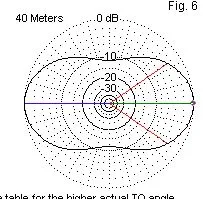SolderSmoke Podcast 223 is available:
27 June 2020
Quarantine Field
Day!
Ironically, THIS YEAR we are both
participating
Pete's FD Plan, Bill's FD plan
Talking to Clubs:
Pete's talk to the Cedar Valley Iowa
Club
Bill's talk to the Vienna Wireless
Society
Pete's Bench
DDC SDR
Ideas from the Summer SPRAT
Mean Well Voltage Regulator
SHAMELESS COMMERCE DIVISION: PATREON. SS is an SV DELOS WANA-BE!
We got our very first Patreon Patron!
Jonathan Magee from the UK! Upper Left
on the blog.
Continue to use our site for your
Amazon purchases.
Bill's Bench
NanoVNA
Understanding L Networks
+/- 6kHz Ceramic filter for Q-31
Lobes, Nulls and WSPR
Miscellaneous:
Farhan's feedback Amplifier Video
British Antarctic Broadcast heard
(sort of)
MAILBAG:
Mauro VA6BRO liked the SolderSmoke
book. Thanks Mauro
Tryg in Galway Ireland is
listening. Hope to get you the signed books Tryg.
Michael N4MJR suggested that I use
N2 Corona Quarantine Radio as my phonetics. I dunno...
Ed DD5LP has been helping us get SS
rebroadcast on a German SW broadcast station. Stay tuned!
Rogier PA1ZZ in California sent an
e-mail about the Don Lee Broadcast System. Thanks Rogier!
Rick KE3IJ Silver Skirt on his
2B also. W3GOO did it. Rick traded his Commodore 64 for the 2B.
Yea!
Walter KA4KXX has a simplified
circuit for the MMM! From UK
Peter VE1BZI thank us for the tribal
knowledge. Dipolo Crilolo
Peter VK2EMU Wee need someone to
make the Constructor Crusader badge.
Scott KA9P sent us the Amateur
Wireless cover from 1934 with the Constructor Crusader thing.
John GM4OOU Built lockdown
rig. we want pictures!
Jerry KI4IO His version of the
Sproutie by AA7EE FB
Adam N0ZIB built a MMM
Wouter ZS1KE in South Africa --
comparing notes on Drake 2-Bs
Randall KD5RC wants to get started
in HB.



























